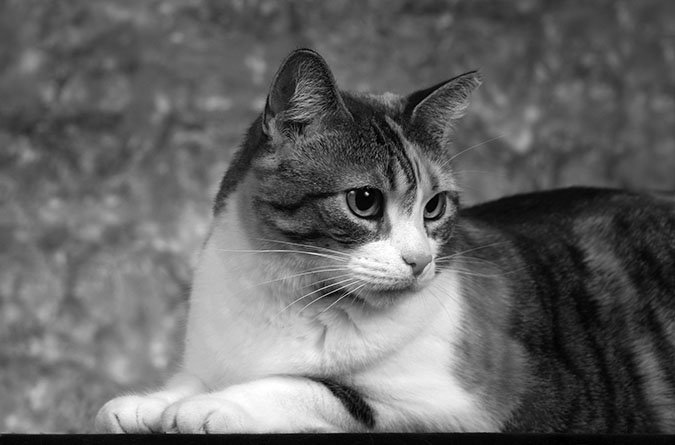Q: My 11-year-old male domestic shorthaired cat has just been diagnosed with diabetes. I am feeling overwhelmed by the prospect of managing this condition and concerned for his well-being. Can you tell me a bit about this condition, his prognosis and how it can be managed?
A: I understand your concern regarding this common feline disease, which affects between 0.2 and 1 percent of all cats. While diabetes mellitus is manageable in the majority of cats, this does require dedication and the collaborative efforts of both owner and veterinarian.
The majority of cats with diabetes have a form of this disease similar to Type 2 diabetes in people. In this form of the disease, the beta cells in the pancreas that normally produce insulin either produce less than normal amounts of insulin or the cells in an affected cat’s body become resistant to the effects of insulin — or both.

One major effect of insulin is to lower blood glucose concentration, largely because it promotes the uptake of glucose by various cells in the body, which then use the glucose as an energy source. For these reasons, cats with diabetes typically have elevated blood glucose concentrations (hyperglycemia), and various tissues within their bodies may become relatively starved of energy, leading to dysfunction and clinical illness.
The goals of therapy are to limit the clinical signs that may occur because of hyperglycemia and the energy starvation of cells while avoiding low blood glucose concentrations (hypoglycemia) and other metabolic complications, which can be potentially life threatening. These goals are achieved primarily by administration of insulin by injection and by controlling other factors (obesity, avoidance of certain drugs, diet) that may contribute to either increased blood glucose or to insulin resistance, or both. While oral hypoglycemic drugs can benefit people, they are generally not effective in treating cats.
It is important that you work closely with your cat’s veterinarian to appropriately evaluate your kitty upon initial diagnosis and to devise a management plan that is effective and feasible for you. Since hyperglycemia may be caused by other conditions (such as hyperthyroidism) and since diabetes may occur concurrently with other diseases such as pancreatitis, initial evaluation is important to rule out other causes of hyperglycemia and identify other diseases.
This initial evaluation may include blood work to evaluate your kitty’s biochemical status and red and white blood cell counts, urinalysis, measurement of serum thyroid hormone and/or imaging studies, such as abdominal ultrasonography.
Treatment commonly involves dietary modification (there is evidence suggesting that carbohydrate restriction and increased fiber content may be beneficial) and injection of insulin, most commonly twice daily. There are many different types of insulin that vary with respect to how long it takes them to reach peak effect and duration of action, and this choice will be informed by the tests that your veterinarian will recommend and by individual response.
Careful monitoring both at home and during periodic veterinary visits will be an important part of management.
The good news is that with appropriate treatment and monitoring, cats with diabetes mellitus can do every well for long periods of time. While owners may be overwhelmed at first, they commonly become accustomed to treating their kitties fairly quickly. Treatment will be lifelong in most cases, although remission from diabetes mellitus does occur occasionally. There is, unfortunately, no cure for diabetes mellitus at this point, but quality of life can be excellent for years in many cases.
I hope that this is helpful, and hang in there. I am confident that you can do this, and your kitty will love you all the more for it!
—Sincerely, Elizabeth



